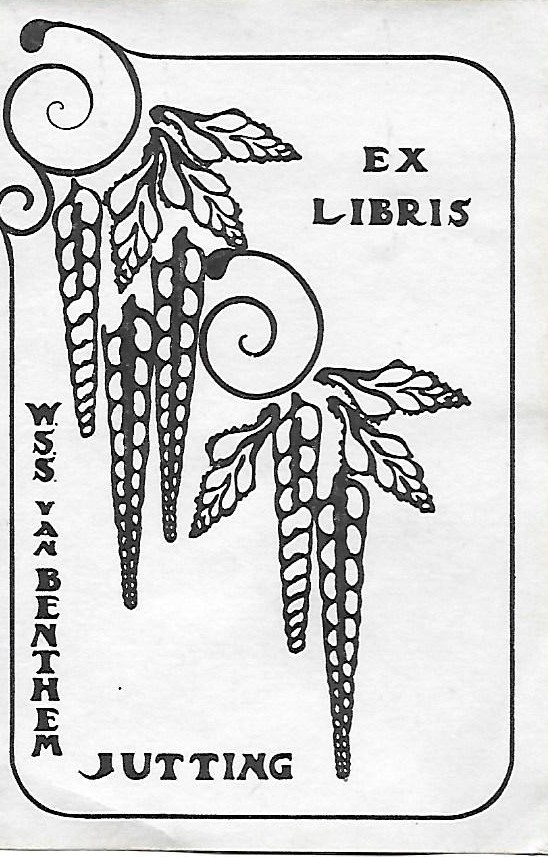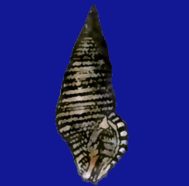In the previous guest blog we looked at the shells that were named after Tera. In this blog we will look at Tera’s meaning for science.
Tera begins to study Natural History in her high school years. She loves nature and describes in her diaries what she sees, what flowers bloom and what birds she hears. She soon learns to use the Latin names.
Biology stems from medicine and natural history and studies living organisms. In the nineteenth century a distinction was already made between botany and zoology. When Tera starts her studies there is more attention for describing the different species than for the study of function, reproduction and heredity. In her studies, she learns both botany from Stomps and zoology from Weber. Weber draws her further into zoology. When she goes for an audience with Weber and he confidentially presents her with his plan, he also asks for a specimen from the Riviera. Tera notes in her diary: Wants a lot of reptiles and salamanders from Riviera. Oh professor, I can keep them alive in my plant pot. No, the intention is preserved species, that is much more useful to us here. That’s something! Typical systematiker
Since Weber and his assistant De Beaufort can be seen as Tera’s most important teachers, it is not surprising that Tera also becomes a typical “systematiker”. Taxonomy is the division of individuals or objects into groups based on predetermined criteria, such as external characteristics. In biology, taxonomists are those who deal with finding, describing, naming, and classifying organisms. So Tera becomes a taxonomist and collects, describes and classifies shells. She started doing this in 1919 when she inventoried and named the Schepman collection. Taxonomic research depends on good administration. She has to deal with very large numbers of species and without a good card index she will not get very far without making mistakes. That is why her card catalog is still world famous and has been used as a basis for digital reference works.
Her first publication is from October 1918 and is about dragonflies’ wings in Thijsse’s “De Levende Natuur”. Her last publication is about shells on the beach of Domburg in 1977 in the magazine of the Reformed Church of Domburg. She publishes in Dutch, English, German and French. In sixty years (1918-1977), she wrote more than two hundred and forty articles, books, book reviews, obituaries and biographies.

Here you see the Ex LIbris which Tera draw herself.
What limited her in her work were the illustrations. Old reproduction techniques such as lithography and photolithography had died out shortly before her. In general, reproduction technology had deteriorated. Moreover, the detailed and correct drawing of shells is a time-consuming and specialized craft, which not every draftsman has mastered sufficiently. Photography was not good enough at the time. Her work would no doubt have looked very different and would probably have been more accessible if she had had access to modern imaging techniques.
She writes two handy guides in the Fauna of the Netherlands series about Dutch shells. These highly readable books are still the basis for the classification and identification of shells for amateur collectors in the Netherlands. Unlike, for example, in chemistry or medicine, older publications in malacology are still relevant. Tera’s publications are still regularly cited. She eventually grows into the worldwide expert in the field of terrestrial and freshwater mollusks, especially in the Indian archipelago. She focuses on the various islands. She describes more than two hundred and seventy new species in her lifetime.
The contemporary malacologist Jaap Jan Vermeulen (1955- ) specialized in the snails and shells of South East Asia writes: Tera van Benthem Jutting has been of great importance for the study of the terrestrial snail fauna of present-day Indonesia. Before that, the situation was quite chaotic: information spread over countless large and small articles, no overview. Her life’s work has been to write synoptic versions of the fauna for each island or group of islands: species lists, in which all older literature is listed and critically assessed, but in which only new species are fully described and depicted. The fauna of Java has been fully revised by her, in the sense that all species are described and depicted. In this way she covered almost the entire archipelago, with the exception of the Indonesian part of Kalimantan, about which very little was known at the time, and of Sulawesi, an area of which a reasonable adaptation had already been published (..). You can safely say that up till this day almost nothing is published about the snail fauna of Indonesia without her name appearing in the references.
In addition to these purely scientific activities, she also participates in a number of important projects in the Netherlands, such as mapping the flora and fauna of the Naardermeer and research into the changes in the Zuiderzee as a result of the construction of the Afsluitdijk.
As curator of mollusks, she leaves her mark on the Zoological Museum, about which she has explicit views. She actually thinks that she is the only one who really knows what is important in the museum and she can sometimes grumble at her bosses and colleagues, both in her diaries and in her letters. When she arrived in the Indies in 1930, she soon wrote to her father: I have a hall-shaped room. My little cubicle in Amsterdam is about a sixth of it. (..) Now I’m covered in shells again and that gives a very familiar feeling. The work is pretty much the same as in Amsterdam, except of course I am only a curator here and not what the Beaufort always calls 1st officer on board, because I also knew the entire course of events in the museum there. Dammerman does this all by himself (..).
And later back in Amsterdam she writes to Pico about the ups and downs in the museum and also gives him tips for the museum in Middelburg. In addition, she does interfere with the practical course of events, as she wrote to Pico in 1940: Have I already told you about my woes about whitewashing a silly little room. I’ve been working on this since May, nagging again and again, and insisting on making some haste. First the municipality had to do it, then Artis, now the municipality again (the latter is correct, but Beaufort never wants to apply for anything). My goodness, how much energy did I waste on that. (..) But I still have a glimmer of hope that it will be all right soon. It seems as if I desire a high favor for myself. And how B. will find me a nag. But I’m like Peetje, a fox terrier, who won’t let go.
Whether she really is the only one who can take care of the museum is the question, but she does take it upon herself: De Beaufort is back home with a fever, so most of the work, and especially all the decisions, I have to do again. Engel is someone who likes to leave such things to someone else. So much for a future director. And later also: I know that de Beaufort relies on me if something happens (Engel is not much help in times of need); I am responsible for the staff and the museum, and although I cannot protect them from bombs, I can try to guide them through the dangers of internal panic and upheaval. So, it seems fairly certain that she had an important role in guiding the museum and the collection through the war.
Soon after the foundation of the Malacological Society, Tera became a member and played an important role there. Together with van Regteren Altena she forms the editorial board of the magazine Basteria for many years. This gives her a large say when it comes to the quality of the documents to be published and she does not hesitate to apply corrections. She organizes conferences and excursions. She is also always willing to guide new collectors. In 1976 she also receives the excursion of the Malacological Society to De Wael and when the young amateur collector Ruud Bank sends her a neat letter in 1976, she replies immediately. Within the Zeeuws Genootschap she fulfilled a similar role from 1964 until she suffered a cerebral hemorrhage in 1978 and reduced her activities.
So much for Tera’s scientific significance. If there are readers who have a broader, more professional view of Tera’s scientific work, a guest blog is certainly welcome. In the next blog we will discuss the person Tera van Benthem Jutting.
